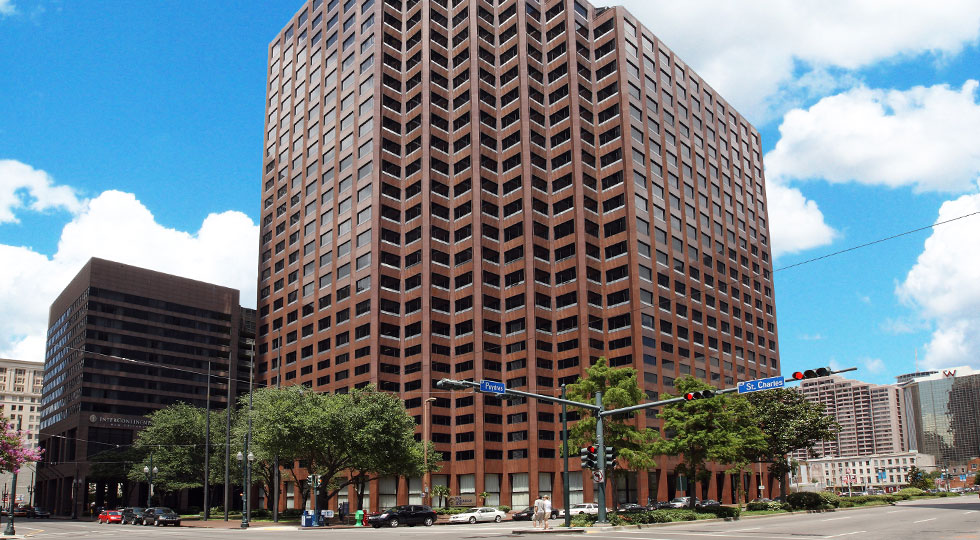Now, Next & Beyond: The path forward for reentry into the office space
As the COVID-19 pandemic continues to rewrite the rules of daily life, both personally and professionally, every business must deal with the unprecedented challenges that few of us ever expected. We in commercial real estate need no reminder of the extraordinary times we are currently experiencing. The retail real estate sector remains the most immediately and directly affected economically by the coronavirus pandemic, with April rent collections down on average of 35% – 45%. Compare that with multifamily, industrial and office tenants, where rent collections are around 90%. However, regardless of the sector or market, the future remains uncertain.
Unlike other disruptions where we can point to a specific cause and implement a plan of action, the challenging nature of this new coronavirus, along with its systemic impact on almost everything we do, makes near-term planning a crapshoot. Hence the difficulty in not only containment but in planning just what our “new normal” will look like—particularly for the office environment.
As areas begin to stabilize and stay-at-home restrictions are lifted, businesses will start the process of reopening, reentering and recovery. The path forward for office landlords and occupants can be viewed in three phases: now, next and beyond.
Now
The “now” is what businesses are currently experiencing and how they are reacting to the situation at hand. A recent Gartner, Inc. survey of HR executives found that 88% of organizations have encouraged or required their employees to work from home. Additionally, daily usage of the Zoom meeting platform has increased more than 300% from before the pandemic. Companies are doing whatever it takes to keep their workforce productive and find creative ways to serve their clients and customers. The place and pace in which employees work may have changed, but if you are the CEO, leader or stakeholder of a company, your mind is centered on subsequent steps—what’s next? The social investments we have made and continue to make will determine how long we stay in the “now.”
Next
“Next” as it concerns the reopening of companies is what landlords and employers are focusing on—the “reentry” phase. As we begin to bring workers back into the office, the physical space and social dynamic of the workplace will undoubtedly change. Employers will first have to find a balance between those who don’t yet feel comfortable returning to the office and those who welcome a return.
What near-term solutions will employers and building landlords be required to put in place for the office environment as we transition through the phases of reopening the economy over the next few months? Obviously, the health and wellness of people will be paramount. Staggering schedules of the workforce coming back into the office, so there are fewer employees present at one time, and coming up with creative wayfinding around common areas and office amenities will be needed to address how we meet social distancing guidelines. Reduced touchpoints, cleaning procedures and sanitizing must be enhanced. New guidelines that change how we interact person-to-person with our coworkers and clients, like controlled access and visitor policies, will need to be determined.
Flexibility is going to be a critical factor once we start emerging from uncertainty over the next few weeks. If all goes well, distancing measures will technically be relaxed, but how many of the near-term policies and procedures will become long-term changes to how and where we interact with each other?
Beyond
“Beyond” is an extension of “next.” As “next” is considered near-term, “beyond” is long-term. It is believed that it takes approximately 66 days for a new behavior to become a habit. How many of the near-term policies will become permanent in the office ecosystem? Real estate owners and operators across every asset class are considering the long-term impacts of the coronavirus outbreak and required modifications that these shifts are likely to bring.
For example, the recent trend toward densification of the workspace may change, but the need for social interaction and professional collaboration—in a safe environment—will certainly keep us in the office. This could result in the reintroduction of hard separations between desks or staggered workspaces, plexiglass dividers or cough shields between coworkers, widened corridors, the continued use of Zoom and other teleconference platforms within the office for team meetings, the list goes on as far as space planners and social engineers can imagine.
Various data show that anywhere from 5% – 20% of the workforce that previously operated from company offices will become permanent work-from-home employees, potentially reducing the need for office space. Then again, as distancing and safety become part of our social psyche, and public health codes place occupancy limits on space planning, the employee-per-square-foot ratio will likely increase, producing an uptick in demand for office real estate. The obvious question is, will one offset the other?
Long-term corporate real estate decision-making will likely be put on hold for some time as we reenter the workplace. Fewer organizations are going to feel comfortable signing a 3- or 5-year lease for office space because of the need to maintain as much flexibility as possible. As tenants and landlords shake out how best to accommodate their mutual needs, the opportunity will lie in rethinking office space to make it more accommodating for employees, whether that means more or less square footage.
On the landlord side, owners with patience and enough working capital to endure the short-term volatility and initial stress of the post-pandemic lease-up will emerge the winners. They will maintain a strong presence in urban centers, with updated spaces that meet the “new normal” tenants will seek.
We don’t know what’s going to happen over the next weeks and months; the situation remains fluid and continually evolving. But as more businesses face various phases of now, next and beyond, the need for professional guidance and best practices and protocols will grow. Please contact us to learn more about how we can help you during these next critical steps. Stirling Properties’ advisors are experienced in all aspects of commercial real estate, including retail, office, industrial, healthcare and multifamily sectors.
Stay safe and healthy.


